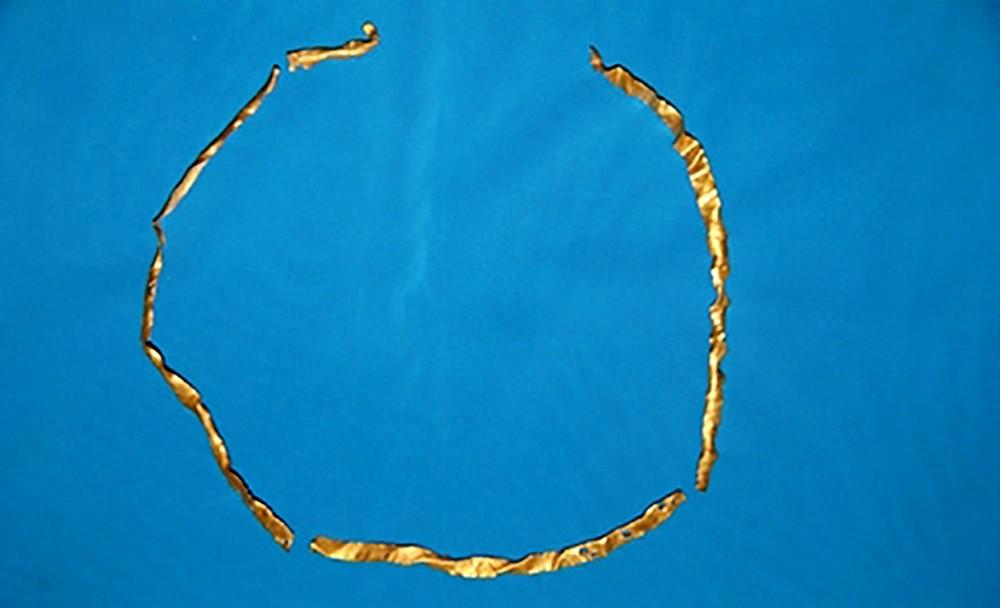Oldest necklace of Caucasus found in Nakhchivan

By Aygul Salmanova
A golden necklace considered to be the oldest golden jewel in the Caucasus was found in of the most ancient parts of Azerbaijan, Nakhchivan.
The necklace belonging to Nakhchivan national costume collection was found in an ancient settlement located in Sharur region during the excavations carried out jointly by the Nakhchivan Branch of the Azerbaijan National Academy of Sciences and the French National Research Center.
Head of the Department of Fine and Decorative Arts of the Art, Language and Literature Institute of the Nakhchivan Branch of ANAS, Fizza Guliyeva said that this art work, which is the oldest golden jewel in the Caucasus, is a new page in the history of Caucasian archeology, ethnography, decorative-applied art, in particular in the Azerbaijani jewelry art and national clothing culture.
Researchers refer the Golden Neck to the Last Eneolithic Age. The necklace is included in the group of pendants with hook-shaped end, which are characteristic for the ancient period. The whitish yellow necklace is 6 millimeters in diameter and 18 centimeters wide. The necklace has six smaller holes, which further improves its aesthetic appearance.
The region abounds with historical monuments, including ancient Gamigaya, Farhad house, Ajhabi-Kahf, Yusuf ibn Kuseyr tomb,Tomb of the Gulistan, Khanagah tomb, Qazanchi bridge, Nakhchivan Juma Mosque, and Geysariyya monument.
Monuments of material culture, rock paintings and petroglyphs of Gyamigaya, a huge number of artifacts discovered by archaeologists in fortresses and ancient settlements, as well as the ancient land structures allow experts to talk about the identity and unique culture of this region.
Today there are more than 1,500 historical and cultural monuments in Nakhchivan, of which about sixty have the status of world significance. Traces of the Stone Age era are found in the caves of Gazma, Askhabi-Kyahf and Kilid.
At the end of the 4th - beginning of the 2nd millennium BC fortress cities such as Oglangala, Karabaglar, Chalhangala and Govurgala were found in the territory of Nakhchivan. Monuments of fine art like the rock paintings of Gyamigaya reflect the way of life and the religious and ideological outlook of ancient tribes inhabiting there.
One of the significant monuments not only in Nakhchivan, but also in the entire Kura-Araz culture, is the Gultepe 1 mound. The last archaeological excavations on it, as well as in Maht, Ovchulartep, Dasharh, burial mounds of Garabulag, etc., gave the richest material on which it is possible to trace all aspects of life of the ancient tribes inhabiting in this region and to find connections not only with neighboring regions but also distant countries.
During the excavations near Gultepe 1 and the Shorsu Lake basin, which was conducted with the financial support of the Science Development Foundation under the President of Azerbaijan, more than twenty important artifacts were discovered - archaeological monuments dating back to the Neolithic and Eneolithic period.
It is also worth mentioning that the first million from the state for excavations was allocated specifically for investigations in Nakhchivan. It is no coincidence, therefore, that of the forty archeological expeditions that are constantly working in the field today, about ten are in Nakhchivan. And ten years ago, in 2005, all archaeological monuments of the region passed certification.
--
Follow us on Twitter @AzerNewsAz
